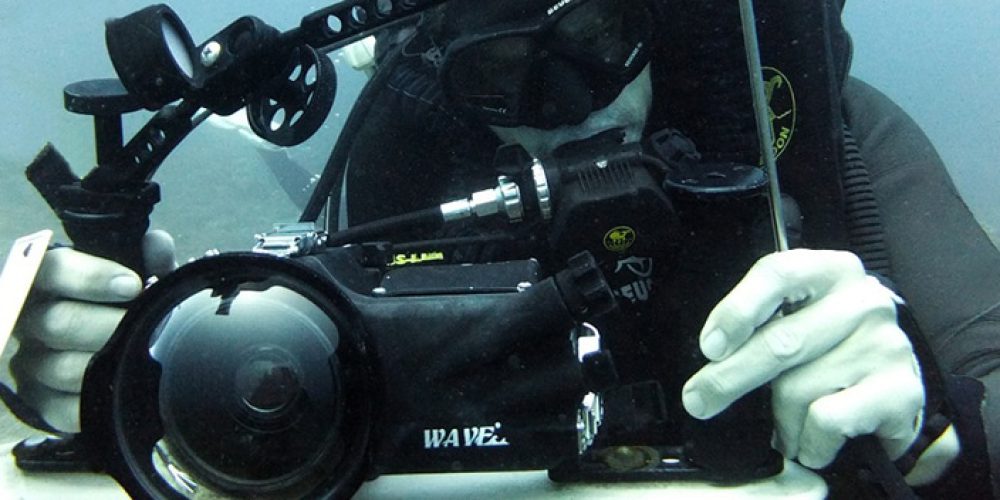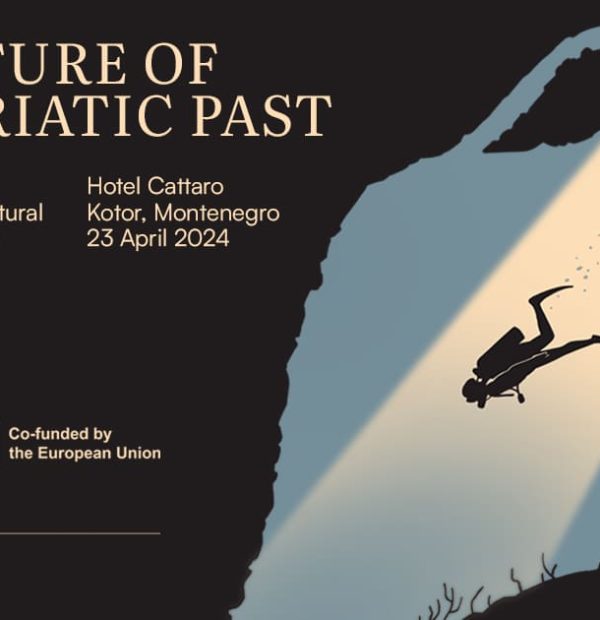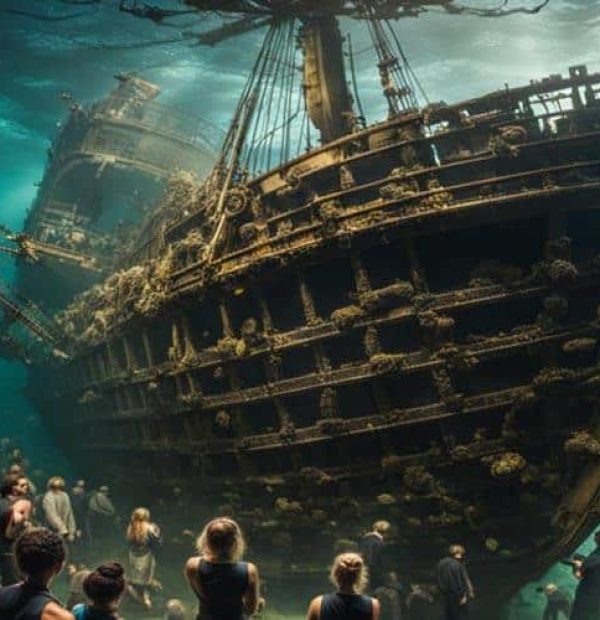Tuesday, 7 May 2024
Menu

We invite you to read the transcript of a very interesting conversation that our editorial colleague Wojciech Zgola had with Bart Lukasik. The gentlemen talked, among others, about diving in South Africa, filming underwater flora and fauna, diving inspirations and fascinations and an interesting idea of making 100-second films. We invite you to have a read!
Hi Bartek, I am glad that we met in April, at the Podwodna Przygoda Fair in Warsaw and we could talk through it
Hi. It was my first time at the Fair in Warsaw and I must say it looked pretty cool. It was nice to see some familiar faces, but also to meet many new ones.
For a long time in Poland?
Lately it’s hard for me to plan what’s going to happen next month. For the time being I am in Poland more often than e.g. a few years ago.
What attracted you to Africa, why was it there and when did you first visit?
Africa, specifically South Africa, was an accidental choice. Before, I didn’t even know it was possible to dive there (except for “diving” in cages with white sharks in Cape Town). Once on Koh Tao island in Thailand, I met a native South African who invited me to visit him in South Africa for a short period of time. And a few months turned into a few years. First of all, I was attracted by the richness of nature – the variety of creatures in the ocean, but also on land. I also like the adventure factor of diving and being in that area. Africa is not an entirely predictable place, which makes every stay there different.
Do you also dive without photo/video equipment when this happens to you?
It even happens quite often, mainly when I lead diving expeditions in South Africa. In my opinion, a good underwater guide does not have time to film or take pictures when he is leading a group underwater. The main priorities then are creating a cool reef tour and finding and showing creatures for the group of divers. Combining leading with filming usually has negative consequences for both parties. You won’t get anything filmed decently, and the group would get more out of the adventure if they had a good guide focused on them. I film when I can dive without any other responsibilities, that’s when it works best and is the most fun.
And how do your underwater fascinations break down? Do you personally enjoy filming macro life or rather large animals?
I hear this question very often. At the beginning of your diving adventure you usually get a shot of adrenaline when you see a big animal. With time you start getting interested in miniature (macro) creatures. I am probably at the end of this process and I am mainly interested in the interactions between species, regardless of their size. With undisguised pleasure, throughout a dive, I can look at one square metre of reef and read the inter-species relationships in that section. From a filming point of view, however, it’s not always the creature you see that’s important, but what the conditions around it are (light, visibility, currents, diver behaviour) by which you can determine whether the shot will be successful. Chasing animals left and right just to catch a few seconds on camera, in my opinion, makes no sense. You have to be able to read the environment, the situation around you and the intentions of the sea creature to decide whether it’s worth to hit the REC button. The greatest satisfaction for me comes from a well-planned approach and shot in relation to a given animal, which “allows” to be filmed, or even “poses” for the shot and you can see that it does not feel threatened by me. This is when the best shots come out. Of course action shots, when everything happens at once, like hunting, are great too, but you can never plan for that, you just always have to be prepared.
And how then did the idea for your films of 100 seconds each come about?
The idea was born while riding public transport in Warsaw. My observation showed that more than half of the passengers spend the entire journey with their eyes fixed on their smartphones. It is obvious that they are not only looking for knowledge, but also playing games, checking e-mail or watching videos. It seems to me that thanks to the short format of the episodes, it is possible to smuggle in a bit of such light knowledge, if only “between one stop and the next”. The reach of such a format is enormous, especially as the series is mainly in English (with Polish subtitles).
How long did it take you to shoot them? Did you shoot so much material during, say, one dive that you could then make, I don’t know, 5 episodes out of it?
The material in these episodes was not shot for this particular series. Rather, I used a whole bunch of shots that were lying fallow in my archive waiting for some form of use. The Sea Animals series cleared out this archive perfectly. The general rule of thumb is that I am very satisfied if from one 60-minute dive I can get 1-2 great shots (about 20 seconds) and maybe 5-10 (about 100 seconds) acceptable shots, i.e. ones that can be used but are not easy to sell. We are talking about prepared shots already after editing.
Do you have a favourite among these 50 episodes?
Of course. My absolute favourite reef animal is the beautifully coloured Harlequin Shrimp, which also has a very interesting life. I will reveal that it has a dark, bloodthirsty side. You can find out more by watching the episode :).
On the leaflet it says “Africa is not for SISSIES”. What does this mean and does it mean that it is dangerous or difficult there?
“Africa is not for sissies” is the brand name of the diving expeditions I organise on the coast of South Africa and Mozambique. The idea is that these are not typical diving expeditions. They tend to lean more towards the “adventure” side, meaning that the time spent is practically all activity-filled. I lead these expeditions to show as many animals as possible both above and below the water, and we know that nature and weather do not always work perfectly together, so you have to adapt and sometimes sacrifice lying by the pool to look for lions in the bush. Besides, diving conditions in South Africa also change from day to day. For beginners, I recommend gaining some experience first before coming here. Additionally, you have to get up early in the morning for a dive :). Because of these factors, I tell it like it is in advance and then I don’t like to complain and that’s where the name of my expeditions came from: “Africa is not for sissies”. (Sissies – wimps).
Standard question: what are Bart Lukasik’s plans for the near future?
The coolest thing would be to go to another part of the world and create another 50 episodes with other animal species. I’m thinking about the region of Indonesia, the Philippines, Australia, etc. Some species I already have overlap with these regions, but there are many other very interesting ones found only there.
Thank you very much for the interview and, together with you, I invite you to watch your videos on our portal Divers24.
Thanks a lot. I hope the videos will be an interesting addition to the D24 programme. I also invite you to follow my film profile on FB “Bart Videography“, where all my new videos and projects appear, and sometimes interesting information from the world of diving and Africa. All my films are also available on my throne www.bartlukasik.com









Welcome to DIVERS24.COM, your daily source of scuba news, freediving, scuba diving information, and equipment reviews. Our comprehensive coverage of the dive industry from A to Z provides you with all the latest scuba news, training updates, underwater photography tips, and everything else related to scuba diving. Whether you’re a beginner or an experienced diver looking for more knowledge about scuba gear or techniques – we’ve got it covered! With our in-depth articles written by experienced divers who have been there and done that, you are sure to find exactly what you need here at Divers24.com. Dive into scuba news today!
Underwater Media Sp. z o.o.
Szafarnia 11/F8,
80-755 Gdansk, Poland
Welcome to DIVERS24.COM, your daily source of scuba news, freediving, and scuba diving information. Sign in for a weekly news update and discount coupons for dive gear and apparel.
@2023 - underwatermedia.pl. All Right Reserved. Designed and Developed by Tworzenie stron internetowych Gdansk

The Divers24 portal is currently the largest online medium treating diving in Poland. Since 2010 we have been providing interesting and important information from Poland and around the world on all forms of diving and related activities.
Contact us: info@divers24.com